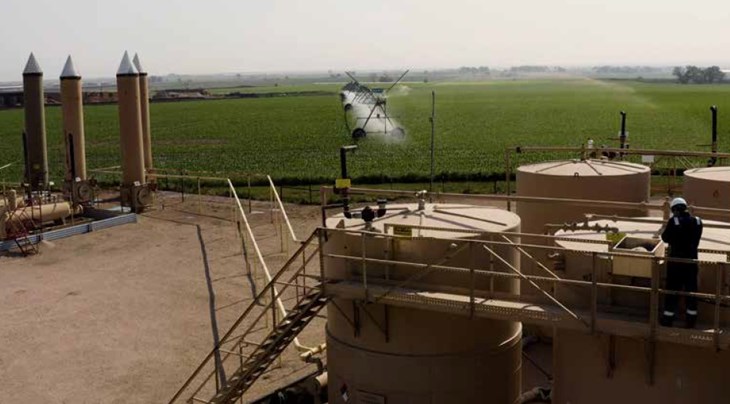Optical gas imaging (OGI) cameras are a versatile tool, promoting efficient facility operations and responsible corporate citizenship by quickly identifying gas leaks, confirming vented emissions, and accurately quantifying both. In this article, we examine the ever-changing dynamics of a low-carbon economy and discuss how producers can implement OGI to combine profitability with environmental accountability.
Defining ESG
Environmental, social, and corporate governance (ESG) is a term describing responsible corporate operations driven by societal expectations, markets, and other factors. Examples include companies managing waste responsibly and adopting circular economy principles.
Companies can ultimately increase profitability via this form of responsible operation. Investors are careful to avoid risk and, if an oil and gas producer’s contribution to climate change represents a business or public relations risk, investors are less likely to consider it worthwhile in the long term. Competing with solar, wind, and nuclear power, as well as coal — oil and gas operators must convince investors of their commitment to ESG to thrive in a low-carbon economy.
Managing & Reporting Leakage
As known GHG contributor, methane is at the center of this conversation. Oil and gas producers in regulated jurisdictions must report on their methane emissions, as well as demonstrate efforts to track, man-age, and limit both leak and vent emission sources.
Leaks are nonengineered, unwanted sources of gas emitting from such sources as threaded connections, thief hatches, pressure relief valves, and malfunctioning equipment (e.g., flares and vapor recovery systems). Vents are engineered sources of re-lease, but are being phased out.
Leaking gas and venting gas are differentiated by separate outcomes under regulation/ESG reporting. For example, a leaking flange and venting compressor seals each lead to distinct regulatory outcomes and directions, but they are viewed equally under ESG reporting. Additionally, while leaks are straightforward to manage and repair, eliminating venting generally requires capital investment in tools, talent, and equipment.
Once an organization has discovered and documented all its leaks and vents, it can report on its carbon footprint. Based on this information, companies have several options to implement solutions that minimize their spend while providing the highest emission-reduction return. For ex-ample, a company determines that a methane vent reduction project at one of its facilities will cost about USD $7 per ton. However, the company can sell the captured emissions for USD $12 per ton via carbon offset markets, netting a USD $5 per ton return on investment (ROI) on the project while supporting its ESG reporting and being a more environmentally responsible corporate citizen.


Traditionally, companies reporting GHG/ESG in the methane space have relied on top-down inventories, using a modeled emission factor. An emission factor states that, in theory, a certain threaded connection, flange, or other facility component will emit X amount of gas. Top-down reporting was relied upon in the past because the technology to detect and measure specific emission sources was limited.
Thus, OGI cameras have emerged as a useful tool — an onsite instrument to understand what is happening at the facility level: what is leaking and what is venting. With this technology and the addition of new quantification OGI solutions, this information allows for greater accuracy in GHG/ESG reporting. OGI also helps producers determine where best to deploy capital for the highest emission reduction.
Once leaks are discovered and vents confirmed using OGI, oil and gas producers have several options for eliminating those emission sources. For example, malfunctioning and/or high-venting pneumatics, as well as pumps venting methane fuel gas, can be displaced with clean instrument air, or retrofitted/replaced to be electric-powered. Vent sources including compressor seals, tank vents, and casing gas can be alleviated using vent gas capture systems, which can use the received gas to supplement on-site fuel gas consumers (e.g., heating equipment) or use the energy to generate useful by-products (e.g., electricity generation).
Conclusion
Companies that embrace minimizing leaks and eliminating vents must ac-knowledge the effort is a long-term investment requiring a multi-tool approach and active engagement. Regulation enforcement has increasingly restricted the emissions oil and gas producers may release, but industry opinion has become a driving force pushing that objective further. Rather than a mentality of “us versus regulators,” producers increasingly view their corporate responsibility through the lens of “all of us.” Opinions on ideal energy sources in the future can continue to be debated, but right now producers can work together for a brighter future, and OGI is an effective tool to help deliver that future.


Joshua Anhalt is the founder and president of GreenPath Energy, Ltd. An oil and gas methane emission specialist with over 20 years in oil & gas energy sector, Joshua has a Red Seal Journeyman Instrumentation background and extensive experience in methane emission detection & measurement, regulation, mitigation, and business development.
Craig R O’Neill has worked for Teledyne FLIR for over 19 years and been actively involved in the OGI market since the introduction of commercial Optical Gas Imagers in June 2005. Currently, he has global responsibility for the Optical Gas Imaging line of business and the strategy for FLIR’s solutions in the oil and gas industry.

